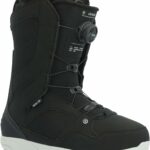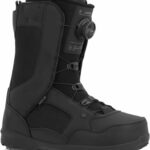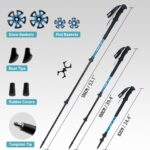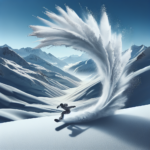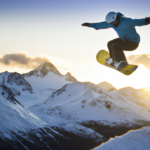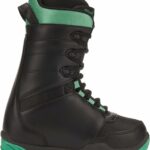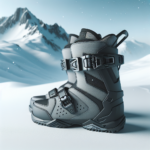If you’re passionate about snowboarding or just taking up the sport, you might be wondering where to set your bindings on your snowboard. This handy guide will break it down for you, ensuring your next ride down the slopes will be safer and more comfortable. This could truly transform your snowboarding experience, improving your control, comfort, and overall performance as you tear up the mountain, whether you’re a seasoned rider or a snowboarding newbie.
Understanding Snowboard Bindings
Snowboarding is quite the adrenaline fueler, a sport that gets your heart pumping, and your muscles working. It’s incredibly fun and exciting. But before you hit the slopes, there is a still you need to know and understand, starting with your snowboard bindings. Let’s talk about why they’re so important.
Purpose of Snowboard Bindings
Snowboard bindings are the bridge between your body and the board. They transfer your muscle movements and weight shifts onto the board, allowing you to steer and maneuver smoothly. Bottom line, without properly set bindings, controlling your snowboard would be practically impossible. They are the anchor that keeps your feet securely fastened to the board, and the medium through which all movements from your body transfer to the board.
Different Types of Snowboard Bindings
Just as there are different types of snowboards, there are also different types of bindings. Broadly speaking, these are strap-in bindings, step-in bindings, and hybrid bindings. Each type has its own unique features, advantages, and potential drawbacks, and the choice largely depends on your personal preference, comfort, and the kind of riding you intend to do.
Key Components of Snowboard Bindings
Snowboard bindings consist of several components, including baseplates, straps, highbacks, and ratchets. The baseplate is what connects the binding to the snowboard. Straps secure your boots in the bindings, while the highbacks are the vertical plates that lie against your lower legs, providing support and facilitating control. The ratchets allow you to adjust the fit of your bindings to your boots.
Determining Your Riding Style
Now that you understand snowboard bindings, it’s time to assess your riding style. This is vital, as it has a profound impact on how you’ll set up your bindings.
Identifying If You’re a Regular or Goofy Rider
Before setting up your bindings, you need to determine if you’re a regular (left foot forward) or goofy (right foot forward) rider. This can be as simple as observing which foot you naturally put forward when sliding on a slick floor or which foot you use to kick a ball. There’s no right or wrong here – it’s all about what feels most comfortable for you.
Understanding the Different Riding Styles
There are three main snowboarding styles: freestyle, freeride, and all-mountain. Freestyle, as the name suggests, is all about tricks, jumps, and halfpipes. Freeride snowboarding is off-piste, exploring unmarked and unpatrolled areas beyond the boundaries. All-mountain riders are a mix of the two and are comfortable in any type of terrain.
The Impact of Your Riding Style on Binding Placement
Your preferred riding style impacts how you set your bindings. For instance, freestylers often set their bindings farther apart for better balance, while freeriders might set them with a more forward lean for maximum control and responsiveness.
Choosing the Right Stance Width
Your snowboarding power, balance, and agility are significantly impacted by your stance width, which is why finding the perfect width is crucial.
How to Measure Your Stance Width
Your ideal stance width usually aligns with the width of your shoulders. This gives you a solid, stable base. To measure, simply stand over your board with your feet where you’d naturally place them, then measure the distance between the centers of your feet.
How Stance Width Affects Performance
A wider stance gives you more stability, which is great for freestyle tricks. However, it can also make turning more difficult. On the contrary, a narrower stance is great for carving and quick turns, but won’t provide the same level of stability when landing tricks.
Adjusting Your Stance Width According to Your Snowboarding Level
Newbies may want to start with a narrower stance to help with balance. As you gain confidence, slowly widen your stance until you find your sweet spot.
Proper Stance Angle
Your stance angle is another critical aspect of binding setup. This is about how your feet are angled on the board.
The Importance of Stance Angle in Snowboarding
Your stance angle in snowboarding can greatly impact the board’s performance. It affects how you balance, initiate turns, and absorb shock. It’s essential to get your stance angle right to avoid discomfort, fatigue, and potential injuries.
Recommended Stance Angles for Different Styles of Riding
There’s no one-size-fits-all when it comes to stance angles. Freestyle riders might prefer a duck stance, where both feet are angled away from each other – this facilitates easier switch riding. On the other hand, freeride and all-mountain riders may opt for a forward stance, where both feet are pointed toward the front of the board to aid down-the-hill navigation.
How to Adjust Your Stance Angle in Bindings
Thankfully, adjusting your stance angle in bindings is pretty easy. Simply loosen the screws connecting the bindings to the board, alter them to your preferred angle, and then retighten. Remember that it’s beneficial to experiment with different angles until you find the one that feels best for you.
Front Foot Binding Placement
Now, let’s talk about your front foot binding placement. It’s crucial for your riding comfort and performance.
Position of Front Foot Binding Depending on Riding Style
The position of your front foot binding will depend on your riding style. But, typically, it should be around the center of the board. Freestyle and freeride riders may choose to shift the binding slightly towards the tail or nose for certain specific tricks or rides.
Angle Settings for Front Foot Binding
The angle of your front foot binding also depends on your style of riding. For freestyle riders, this may be around 15 degrees, while freeriders might prefer 21 degrees or more. Yet again, this isn’t set in stone, so adjust it to where you feel the most comfort and control.
Adjustment Preferences for Front Foot Binding
When adjusting your front foot binding, focus on what feels natural to your body. The key here is to ensure that your knees can bend directly over your toes. This prevents undue strain on your joints and helps you maintain better balance.
Back Foot Binding Placement
Just like the front foot, the back foot binding also plays a pivotal role in dictating your board’s performance.
Changing Back Foot Placement for Different Terrains
Your back foot binding placement can change based on the terrain. If you’re riding in deep snow, shifting the bindings towards the tail of the board can help keep the nose up. On powder-less days, placing your back foot closer to the center of the board can increase maneuverability.
Impact of Back Foot Angle on Turning and Stability
Your back foot angle greatly affects your turning and stability. Smaller angles (0-15 degrees) are good for freestyle riding, while greater angles (15-27 degrees) favor freeriding or carving. Too much angle can make your stance uncomfortable and might decrease your stability, so it’s all about finding balance.
Recommendations for Back Foot Binding Setting
In general, it’s recommended that less experienced riders start with a less aggressive back foot angle, and then gradually increase it as their skills and comfort level rise.
Using Reference Stance
The reference stance is an excellent starting point for beginners, but even the most experienced riders might find it useful.
Understanding What a Reference Stance is
Snowboard manufacturers often provide “reference points” on their boards. These suggested points are calculated based on the board’s length, flex, sidecut, and intended use – this is the reference stance. It’s meant to give you an optimal blend of control and performance.
Why Most Snowboarders Start With The Reference Stance
The reference stance is popular because it’s a tried-and-true recommendation from the manufacturer. Starting from the reference stance allows you to test out the manufacturer’s suggestion and gradually tweak your bindings based on your personal riding preferences.
Modifying The Reference Stance Based on Your Personal Preference
Using the reference stance doesn’t mean you can’t change it. Feel free to modify it according to your riding style and comfort. It’s just a starting point. As you progress, continue to adjust your bindings until you find the setting that feels best to you.
Setting Highback Lean
The highback is a crucial part of the binding as it provides support for your legs and helps control the board’s tail.
The Function of Highback Lean in Snowboarding
The highback lean plays a significant role in how your board behaves. Less lean tends to make the board feel looser and more playful, which suits freestyle riders. More lean, on the other hand, results in more responsive carving and suits freeriders.
How to Adjust Your Highback Lean
Most bindings come with a simple adjustment system for the highback. You simply loosen a screw, lean the highback to the desired angle, then tighten the screw again. The best idea is to start in a middle position and tweak as needed.
What Highback Lean Angle Suits Different Riding Styles
Freestyle riders typically prefer less highback lean for better flexibility and tweaks. Carving and all-mountain riders might opt for more lean for efficient power transmission during heel side turns. Again, what ultimately matters is your personal comfort.
Safety Precautions When Setting Bindings
Your excitement to hit the slopes should never undermine the importance of safety checks. Here are a few tips.
The Importance of Regular Binding Inspection
Bindings take a lot of wear and tear. Regular inspection before hitting the slopes is critical to ensure no part is broken, worn out, or missing. Not only will this enhance your performance, but it also ensures your safety.
Potential Risks of Improper Binding Setup
An improperly set up binding could cause the binding to release unexpectedly or not release when needed. This could lead to a lack of control on the board, leading to accidents or injuries.
Safety Tips for Adjusting Bindings
Make sure your snowboard bindings are properly fixed to your board, neither too loose nor too tight. Follow the manufacturer’s instructions and double-check everything before setting off. And remember, if in doubt, seek professional help.
Troubleshooting Common Binding Setup Problems
Even the most experienced snowboarders may encounter binding problems. Here’s how to overcome common setup issues.
What to Do When Bindings Are Too Loose or Tight
If your bindings are too loose, they may prevent you from controlling your board properly. If they’re too tight, they might cause discomfort or impede your circulation. Always ensure your bindings provide a firm, secure fit, but also allow freedom of movement.
Understanding Ways to Fix Uncomfortable Stance
If your stance feels uncomfortable, try adjusting your stance width or stance angles. Little changes can make a big difference in your comfort. Remember, the goal is to find a stance that feels natural and comfortable.
Addressing Common Technical Issues With Bindings
Common technical issues with bindings may include ratchet problems, worn-out straps, or broken highbacks. Some of these problems can be fixed with a simple screwdriver, while others might require replacement parts. If you’re unable to troubleshoot an issue yourself, take your equipment to a reputable snowboard shop for assistance.
Setting up your snowboard bindings correctly is a key part of having a successful and enjoyable ride. Take the time to understand and implement each step covered in this guide, always prioritize safety, and don’t be afraid to experiment. Happy snowboarding!
- What Snowboard Bindings Should I Get? - January 23, 2024
- What Size Screws For Snowboard Bindings? - January 23, 2024
- How To Snowmobile On Water? - January 23, 2024


